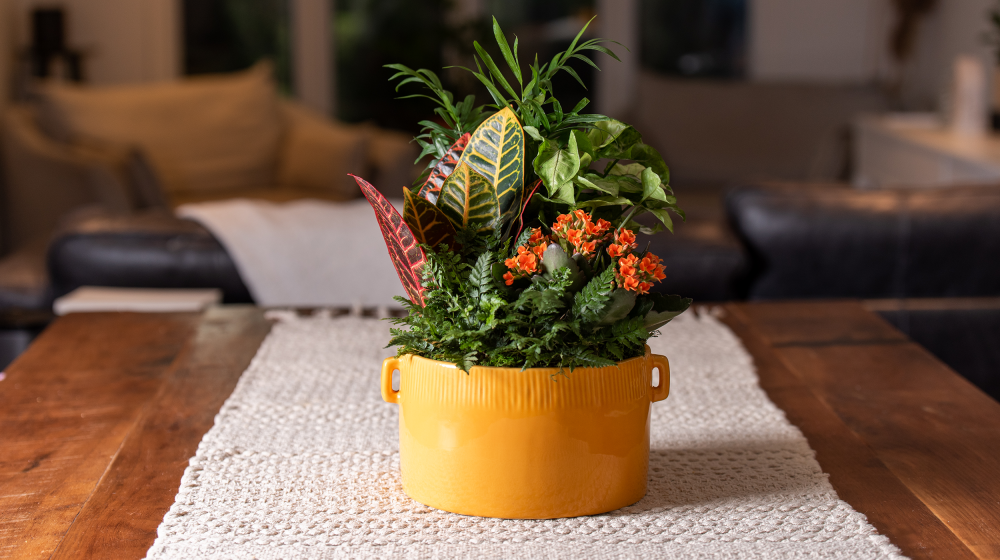
The most important step in knowing how to care for your Fall Garden is to familiarize yourself with which plants are planted in it.
Some common plants put in a fall garden include:
To help identify living house specific plants you can also go to www.livinghouse.ca - Click on Plant Care Info - And click show all.
This will allow you to visually identify the plants you have in your garden. Usually the plants placed in them are not listed on the care tag. So finding out which plants you have first is key to caring for your fall garden.
Gardens can have a mix of tropical plants, to succulents to blooming plants. All of which have different care and lighting needs.
The best approach is to place your garden in an area that receives bright in direct light. If you notice the blooming/flowering plant is fading/dying then you can rotate your garden to give that plant more of the light. The key to lighting with garden planters is to adjust your location based off how your plant is doing.
Overwatering is the killer of gardens! Be conscious of how much water you pour into the plant, less is more! Since there is usually no drainage holes in the bottom of the garden planters - it is crucial to only water your plant enough to saturate each plant. The amount of water given is important because once your plant is overwatered it is very difficult to pour out the excess water.
Water each plant individually, ideally avoid over saturating the blooming plants - they will be able to intake moisture through the others plants wet soil. Majority of blooming plants such as Kalanchoe's - which are technically succulents - like to have their soil dry out in between waterings. However tropical plants that could be in your garden would require more frequent watering. So watering based off each plants specific needs are the best way to ensure your Fall Garden continues to thrive!
Avoid watering directly over foliage or blooms and if you notice your garden has moss at the top of the pot then it is best to water under the moss to ensure that the soil intakes the water and not the moss. When watering into a pot without drainage holes, be sure to discard any excess watering sitting at the bottom of your pot to prevent root rot or pests.
If one of the plants in your garden dies or your garden has grown in size beyond its pot. You can consider re potting. When re potting your garden
Since your fall garden will have a mix of plants with different temperature and humidity needs - finding the mid ground for temperature and humidity is ideal. Adjust the location of your fall garden as needed. If you notice brown tips on your tropicals or crunchy leaves then you may need to slightly increase the humidity in the room that its in.
If one of the plants dies in your fall garden, then your main objective is to remove this plant. Your plant may of died due to underwatering, overwatering or other factors. It is important to assess your gardens soil when removing this dead plant.
If your plant died due to over watering then there is a chance that there may be damaged or root rotted roots in your garden planter. If this is the case it would be ideal to re plant your garden with fresh new soil. While doing this, inspect the roots of the other plants and cut off any damaged/mushy or rotted roots first before re planting your plants together.
To find out if the plants in your fall garden are pet safe you must first find out which plants are planted in your fall garden.